Organizing Your Writing for NaNoWriMo and More
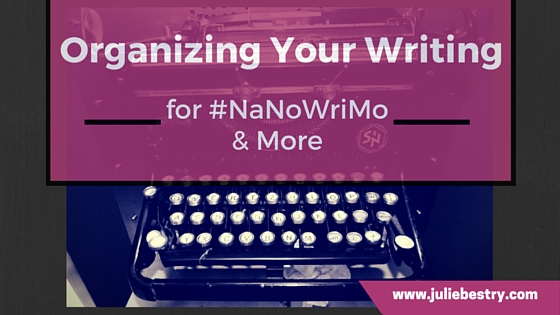
November is National Novel Writing Month, affectionately known as NaNoWriMo. This annual project/contest gives writers (and aspiring writers) the opportunity to be part of a collective push to focus creative energies on an endeavor they might otherwise put off until “someday” (a date notoriously absent from the calendar).
As the NaNoWriMo site explains, “On November 1, participants begin working towards the goal of writing a 50,000-word novel by 11:59 PM on November 30. Valuing enthusiasm, determination, and a deadline, NaNoWriMo is for anyone who has ever thought about writing a novel.” The official program includes social mechanisms for sharing your progress, and badges for participation, writing, and even “to celebrate the peaks and valleys of your personal creative journey.”
- National Novel Writing Month
- National Non-Fiction Writing Month
- National Academic Writing Month
Not a budding novelist? No problem. There are a few different November writing programs for non-fiction, including author/coach Nina Amir’s Write Nonfiction in November, called NaNonFiWriMo. It can be used to write one long non-fiction project, or, as she describes in this article for Writer’s Digest, you could also write 30 blog posts, essays or articles. If you’re a professor or an academic researcher who really needs to publish (and not perish), there’s Academic Writing Month, created by Dr. Charlotte Frost and run through PhD2Published.
The key element of NaNoWriMo and most of its sister programs is that it’s about eliminating all of the things that keep writers — the experienced and aspiring kinds — from actually writing: procrastination, self-criticism, and fear. The writing period in November is just that, for writing — there’s no editing. It’s just about putting your tush in the chair (or, I suppose, your feet in front of the standing desk).
The idea of organizing for a writing project may not seem like an apt comparison to typical organizing jobs. Usually, our goal is to take the chaos of a closet or a desktop and create order. We remove excess, sort the essentials, and group items so they are functional, accessible, and hopefully, somewhat aesthetically pleasing. Applying organizing principles to writing involves similar skills. Yes, the blank piece of paper (or blank screen) is daunting, but think of it as an already-cleared guest room or newly acquired shelving unit. You can clear all the clutter (of characters, plotlines, research, etc.) from your head, and start arranging them in ways that provide order.
This post will look at some strategies for organizing your research and planning resources, overcoming procrastination and writer’s block, and maintaining motivation.
CREATING YOUR ROAD MAP
NaNoWriMo has a variety of resources available for fiction writers, including the basics of getting started writing and ideas on the nuts and bolts of the fiction-writing process, covering characters and backstories, plot development and conflict, and setting and world-building. Academic Writing Month has a participant toolkit and an accountability spreadsheet.
Beyond planning to participate in a writing contest or program, you need to plan your writing. Saying you want to “write a book” or even a blog post, without preparation, has little more validity than deciding you want to be an astronaut. Think of it like going on a trip. Whether you use a gas station map or Grandpa’s hand-written directions or Siri’s intriguingly articulated GPS, you need guideposts to make sure you are on the right path. Depending on your writing project, you might start by creating documents to support your work:
Fiction
- character breakdown
- genealogy chart or Venn diagram of relationships between characters
- major plot points or events
- list of conflicts and their resolutions
- list of problems you’ve not yet figured out how to solve
Non-Fiction
- major concepts or themes
- sub-topics
- hypotheses to be tested or hypothetical questions needing answers
- brainstormed list of blog, article or chapter titles
- links or locations of digital or hard-copy references
Make sure this material is easily accessible to you in whatever format you like best. You might prefer to put together a three-ring notebook with dividers and pages for each resource element, so if you need to be mobile and write in different locations, your resources can go with you. If you’re visual and tactile, you might turn a wall, mirror or door into a planning board with Post-It Notes. (Use your digital device to snap a photo each day and keep that information accessible from anywhere.)
Prefer more tech? As someone who thinks linearly, I used Workflowy’s outline format to write 57 Secrets for Organizing Your Small Business. (Read more about Workflowy in the classic Paper Doll post, Don’t Be Listless…Be Listy (And Happy!) With Workflowy.)
Almost every lover of Evernote expounds on the possibilities of writing a book using Evernote. This recent blog post from Digital Inspiration shows how my beloved Trello‘s card system would work for writing a book. The web is full of recommendations for apps for planning and writing for NaNoWriMo:
5 Best Productivity Apps for NaNoWriMo
NaNoWriMo: The Best Writing Apps and Accessories for iPhone and iPad!
The Big Thread of Writers’ Mobile Apps
The Best Apps To Write, Plan & Plot Your NaNoWriMo Novel
Prepare for NaNoWriMo with Evernote
SETTING THE STAGE
Plan when you are going to write. Have you never, ever been able to go to a 6 a.m. exercise class? Don’t imagine you’ll be any more enticed to leave your warm bed to write. Think about when you are usually the most motivated, most creative, and most clear-thinking, and block time on the calendar as a fixed appointment each day as a firm commitment. Then consider a Plan B time period as a contingency for days when no matter how committed you are, emergencies force you to break your stride. Having a back-up in place means you won’t be tempted to argue with yourself or break the chain.
Do your Hokey Pokey. Assemble your resources before your appointed writing time. Need eleven sharpened Number 2 pencils? Require your coffee in your World’s Best Writer mug? Gotta shake yourself about? Great, but remember to schedule time to accomplish all of your pre-writing rituals so that nothing cuts into your writing time.
Save the environment. Personally, I can’t concentrate when I’m warm, but research shows that knowledge workers are half as productive when the thermostat is set at 68° as at 77°. Know what temperature works best for you.
Watch the ergonomics of your set-up, and avail yourself of the best task lighting so you aren’t dependent on ambient light. Reread my post 11 Ways To Organize Your Focus With Ambient Noise so you can minimize auditory distractions.
Create your theme song. Go through your music collection for songs that inspire you to greatness. Set an alarm to have your cell phone play a motivating anthem a few minutes before your posterior needs to be in the chair. Try the theme from Rocky, Rachel Platten’s Fight Song, Queen’s We Will Rock You, Jon Bon Jovi’s It’s My Life, or whatever puts you in an “I Can Do It” mode.
Make the world go away. Chances are good that you won’t have more than half an hour or an hour to dedicate to writing most days — your family and friends and telemarketers can wait. Close the door, set your instant messaging status to unavailable and set your phone to Do Not Disturb. (Just remember to reverse the process as the final ritual when you’re done writing for the day.)
Write. When the planned time arrives, grab your pen and your keyboard and start writing. Don’t wait for motivation.
OVERCOMING WRITER’S BLOCK
I wrote an entire chapter on conquering writer’s block in my book, but I have two favorite tips that always work for me, and my clients report that if they actually sit in the chair instead of making phone calls or surfing the net or doing other busy work, the words will come.
Write to an imaginary pen pal. Sometimes, you know too much about a topic to get a handle on where to start. Begin with “Dear Buddy/Pal/George Clooney, I am trying to write my [article, book, etc.]. It’s generally about [overarching idea]. I’m trying to bring together [list one to five major categories or concerns]. For example…” and then just free-write and talk about the subject. Don’t worry about grammar or fret about logical connections. Just concentrate on creating understanding. Because it’s not the monumental THING (the book, project, etc.) that’s at stake here, but merely telling a random someone about the thing, so that omnipresent fear of failure — what usually keeps our brains in a tizzy — dissipates. And remember, your word count in this email or letter counts towards your 50,000 words!
Do nothing. Seriously. A whole LOT of nothing. Set a timer for 30 minutes (or a 25-minute pomodoro, if that’s your style), and block all distracting stimuli. Face a blank pad or empty screen, but don’t write. You may have to sit on your hands, but do not, under any circumstances, write. You have no idea how slowly time passes when you’re staring at nothing, forbidden to create. Your thoughts may wander a bit, but by the end of the half-hour, your brain will be fairly bursting with ideas and you’ll be chomping at the bit to start writing. If your writing time is severely limited and this option would mean no word count for the day, you can reduce the “nothing” time by half, but the longer you have to sit, squirming, the more likely you’ll break through your block.
TRACKING YOUR PROGRESS
NaNoWriMo and related programs are more for the push to get something down on paper without the paralysis of self-analysis or editing, so the focus is on word count (and just doing it) more than anything else. Certainly, not all of your writing projects will be centered on quantity vs. quality, but there’s always something motivating about knowing where you stand in relationship to your goals.
Count your words. Almost all word processing programs have a word count generator. For example, Microsoft Word automatically counts the number of pages and words in your document and displays them on the status bar at the bottom of the workspace. If you put your cursor at the end of the page, it will show you how many words, total, you’ve written. If you put the cursor at any given point, it will tell you the word count from the beginning (of the document or section) to that point. As you type, the word count will increase; as you erase or self-edit, the word count will decrease. (But you’re supposed to be writing, not editing!)
If you put your cursor at the end of the page, it will show you how many words, total, you’ve written. If you put the cursor at any given point, it will tell you the word count from the beginning (of the document or section) to that point. As you type, the word count will increase; as you erase or self-edit, the word count will decrease. (But you’re supposed to be writing, not editing!)
If you prefer to just have a word count for a particular paragraph or section, highlight that section and right-click (on Mac, Control-Click) to get a word count for that portion only. If you prefer, you can insert the word count in your document. (For Mac, use Insert>Field>Document Information>NumWords.) Similarly, in Google Docs, select Word Count under the Tools menu.
Each type of word processing or writing program will have its own word count generator, so check your help menu. Of course, if you’re using a bare bones program or even a blank email page, you can always copy and paste what you’ve written into a free online word count program like Wordcounter or WordCountTool or WordCounterTool. Just be sure to copy (and not cut) your words, and aim to do your counts after you’ve already spent your allotted time on writing.
Track your word count. As with your choice of writing implement or resource format, how you track is less important than that you do track. Knowing what you’ve done helps motivate what you will do in the future.
Productivity genius Dave Seah created a free template for a downloadable NaNoWriMo Word Counting Calendar. (Dave also makes a 12-month word-counting calendar, so keep your eyes on his inspiring site.)
©2015 Dave Seah, Investigative Designer
Share your word count. Make it your Twitter name for the day. Post it as a Facebook status. Put it in the subject line or signature of your non-work emails.
MAINTAINING MOTIVATION
We tend to be good (sometimes, too good) at fulfilling our obligations to others but fall down on giving our own goals and needs the same respect. If outside pressure and validation motivates you, go with it. (This may not be the time to castigate yourself for how much you care about other people’s opinions.)
Get an accountability buddy. This may be another author, or it just might be a friend or colleague who is uplifting, supportive, and generally has a good sense of stick-to-it-ive-ness. Set an alarm (or ask your buddy to do so) to ensure a daily check-in via phone, text, or email to not only discuss successes, but also challenges. Brainstorm together how you can conquer difficulties.
I once spent days trying to solve a problem with a chapter I was writing. I called my colleague Deb Lee about an unrelated project, but mentioned the cognitive obstacle I was having in finding an angle for the chapter. I’m not sure Deb had a chance to exhale before I started spitting ideas at her, and by the end of the five-minute “conversation,” the problem was solved — without Deb ever getting to say a word. (She’s just THAT good!) Sometimes, when my brain is clogged, I just pull up her photo on the screen and the thoughts flow.
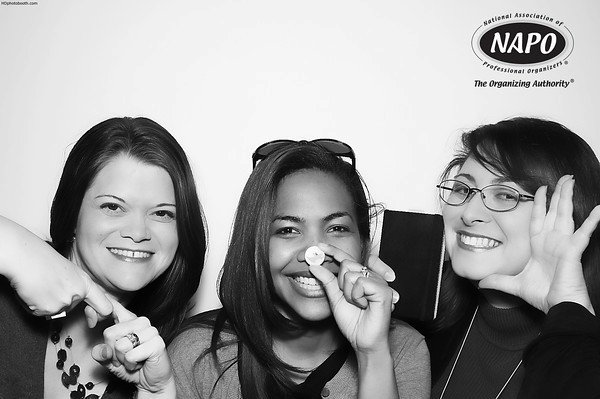 Brandie Kajino, Deb Lee & moi at the NAPO Conference 2011, acting out social media platforms.
Brandie Kajino, Deb Lee & moi at the NAPO Conference 2011, acting out social media platforms.
Make a public commitment. Use social media to let your friends and colleagues know that you’re participating in NaNoWriMo or a similar writing project. Join the online forums and communities for your writing projects — a quick Googling should find the right group for your particular genre or field.
Most people will cheer you on and provide support. But, as with the Deb example above, sometimes it’s just the idea of someone that gives you what you need.
Use your down time (not your writing time) to embrace support. NaNoWriMo has official coaches tweeting inspiration from the NaNoWriMo Twitter account, and there’s even a recorded video of the prep webinar to give you a boost of motivation.
Post your WHY. Outside motivation is fine, but as with any organizing project, nothing can have lasting success unless the motivation comes from inside. Maybe you want fame and fortune. Perhaps you need publishing citations to ascend the professional ladder. Or it’s possible you just want to know you can do it. All of those reasons are good enough if they are YOUR reasons for doing it.
GOOD LUCK. GOOD WRITING!
50,000 words. That sounds like a lot. But 1666 words per day, or maybe a little more if you plan to skip Turkey Day? Well, obviously the Paper Doll blog is non-fiction, but as you may have noticed, my posts tend to run fairly long, and often far exceed that number. This ridiculously long post is 2500 words, and I wrote it in one sitting, counting research!
You can do it. Organize yourself for a fabulous month of writing!

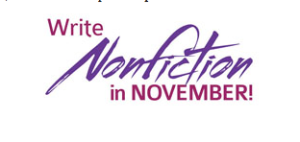
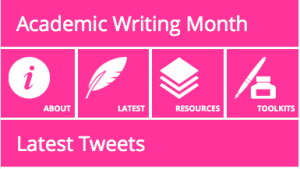
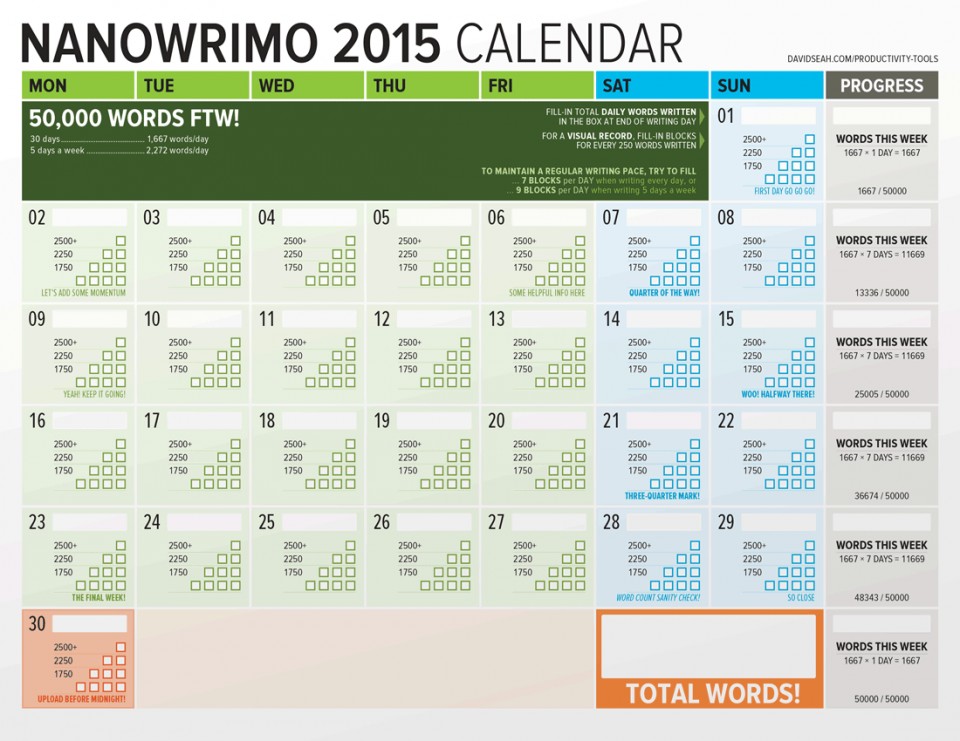




Thanks for the shout out, Julie! =) … and for this very meaty post. I’m putting it in Pocket for safekeeping to prepare for the day I decide to finally write that book I always say I’m going to write. 😉
[…] working at home by respecting yourself and your time, as well as one on using organizing skills to get your novel written during National Novel Writing Month. She also offers glimpses into her own personal (organizing) […]